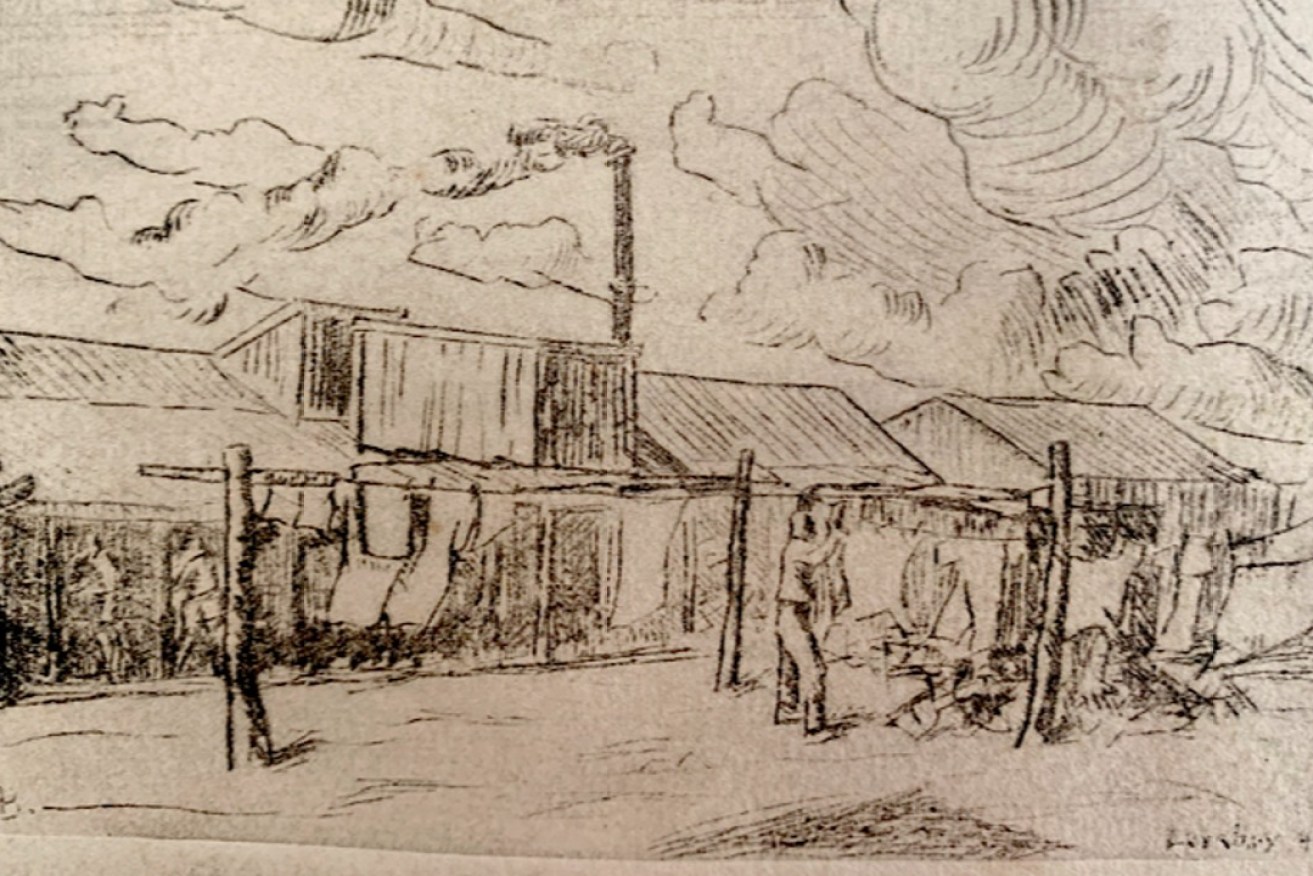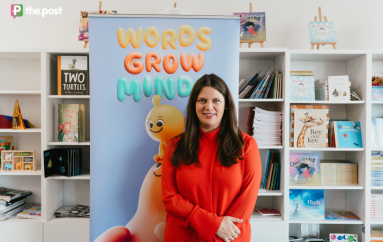Barmera to host experts on WWII internment camp
A symposium about Germans held in the Loveday Internment Camp will be presented by Berri Barmera Council and the Loveday Internment Committee in Barmera this weekend.

An etching of a laundry hut in Loveday Internment Camp by internee von Brandenstein. © P. Khosronejad
Pedram Khosronejad, a professor at Western Sydney University and the curator of the symposium and accompanying exhibition, said he hoped the event will help more people to understand Australia’s diverse cultural history.
Titled German WWII Internees and their Fate in Australia, the event, to be held in the Bonney Theatre in Barmera, highlights the lives of German citizens who were moved to Australian internment camps from Iran during the war.
“The exhibition will contain the fruit of our years of research and collection,” Khosronejad said.
After World War I and leading up to World War II, many Germans left their country in search of better job and life prospects. More than 7,000 of them ended up in Iran.
A large proportion of those immigrants were well educated – engineers and tradespeople among them.
“Many of them wanted to escape Hitler and the tyranny of life in Germany,” said Khosronejad said.
“In Iran, they had very good jobs and good salaries.”
Concerned that German ex-pats might be working for the SS or the Nazi party, Churchill and the Allied powers ordered those civilians be rounded up and sent to internment camps.
“Families were separated, and 488 single German men and two German families were brought to Australian Internment camps from Iran,” Khosronejad said.
“By December 1942, approximately fifty thousand civilian Germans, Italians and Japanese were in Australian camps.”
Rosemary Gower, a historian who has studied the Loveday Internment Camp for four decades, said the Barmera camp was the biggest group of camps in Australia, comprising 440 acres and housing 5,500 male internees at any one time.
The camp, located on the outskirts of town, was self-sustaining, with a poultry farm and piggery, and became the only profitable internment camp in Australia.
The Germans in the Loveday Internment Camp also grew opium poppies to process into morphine to treat soldiers at the frontlines.
Gower said that the camp became a vital part of Australian industry.
“Imports of seeds from the United States dried up after they became involved in the war. Loveday grew vegetables for seed,” Gower said.
“The wood camps provided wood for the army and local construction. They mended tents.
“Work was voluntary for internees, and paid, as per the Geneva Convention.”
Khosronejad added that the German internees from Iran created a college to train and educate other inmates.
“They created a library with 5000 books,” he said.
Many of the German internees from Iran remained in Australia after being released at the end of WWII.
“They had lost everything that they had in Iran. They were able to send parcels of food and money from internment camps to their families in Germany. They stayed to develop this country,” Khosronejad said.
Khosronejad and his team have collected letters, diaries and artefacts from Loveday and the Tatura Internment Camp in Victoria in order to delve deeper into the history of the camps and their residents.
Many of these letters and artefacts will be on display in Barmera at a free exhibition this weekend, alongside the free symposium on Saturday.
Keynote speakers at the symposium include Professor Peter Monteath from Flinders University and Libby Stewart, Senior Curator at the National Museum of Australia.
Among the symposium’s guest speakers are children of German citizens who were taken from Iran and interned in Australia, as well as Helga Griffin, the last living female internee brought over from Iran as a child.
The symposium will include supplied lunch and snacks throughout the day. An informal dinner will also be hosted at the Barmera Club where attendees can buy food and further discuss the day.
The organisers hope visitors will attend the event and take in other activities in Barmera such as the Carp Frenzy ’23 fishing competition to rid Lake Bonney of the invasive fish.




